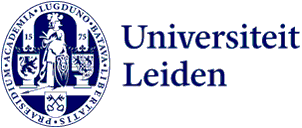
Vici for Victoria Nyst: 'The history of sign language contributes to identity formation'
Victoria Nyst's love for sign language was sparked when she accidentally ended up at a deaf school while studying African linguistics. The university lecturer has since been awarded a Vici grant to research the history of these languages.
For her PhD project, Nyst researched a village in Ghana with a lot of hereditary deafness, where a sign language of its own spontaneously emerged. 'We now know that this is a common process,' Nyst says. 'When deafness peaks somewhere, a sign language emerges. We saw this in Mali, where deaf people came into contact with each other more due to urbanisation, but also in Nicaragua when a deaf school was finally set up there after an unsafe period.'
History and identity formation
These spontaneously emerging languages raised the question of how sign languages in Europe ever came about. 'Your history contributes to your identity formation,' Nyst explains her historical interest. ‘This is particularly important in the deaf community, especially since many children today are educated in mainstream primary schools and don’t automatically come into contact with their heritage and community through a deaf school.'
What comes after France?
Little more was known, however, than that the first school for the deaf was founded in France in 1760 and that such institutions had since spread like an oil slick across neighbouring countries. 'A common point was that we had no material to answer this question, as we only had video recordings for a relatively short time,' Nyst says.
During the corona period, this proved to be more nuanced. When Nyst delved into the archives because of the lack of fieldwork, she came across all kinds of material from European 'sign language pioneers', ranging from a 1957 film to an 1828 dictionary with four thousand entries and Belgian sign lists from 1862. ‘ Such lists turned out to exist all over Europe,' she reflects. 'They had been looked at country by country, but never compared with each other.'
Differences with spoken language
Nyst decided to apply for a Vici grant to trace the origins and kinship of European sign languages. That historical reconstruction will not be easy. 'With spoken languages you have percentages to determine whether something is a language or a dialect, but sign languages are much more similar anyway, because some gestures are very obvious,' says Nyst. 'For example, the gesture for “eat” is almost always bringing something to your mouth. Moreover, certainly in the 20th century, the deaf community has networked massively with conferences and international sporting events, so language contact is also an important factor.'
In addition, the hearing environment also has an influence on sign languages. Nyst: 'In Africa, you see that many sign languages use the same gesture for “death”. Those languages really don't all have the same origin; that gesture is just commonly used in that region, also by hearing people. In addition, most deaf children are born into hearing families, which makes the transfer very different from spoken languages.'
Puzzling with a signing team
Quite a puzzle, then, but Nyst is keen to start fitting the pieces together. 'I already loved getting absorbed in the subject while writing the proposal and I hope that will continue for the next five years. What I’m particularly looking forward to is working with my new colleagues.' Nyst hopes these newly recruited team members will be deaf. 'If you grew up with sign language, you bring incomparable baggage with you as a researcher. That makes a signing team very valuable.'
At the same time, this research will also contribute to another mission of hers: making higher education more accessible for deaf students. 'Our university actually knows hardly anything about how to accommodate deaf staff and students. For example, there are no visual fire alarms, arranging an interpreter is hugely time-consuming and then there has to be money to pay for them. I hope I can make some improvement here.'
